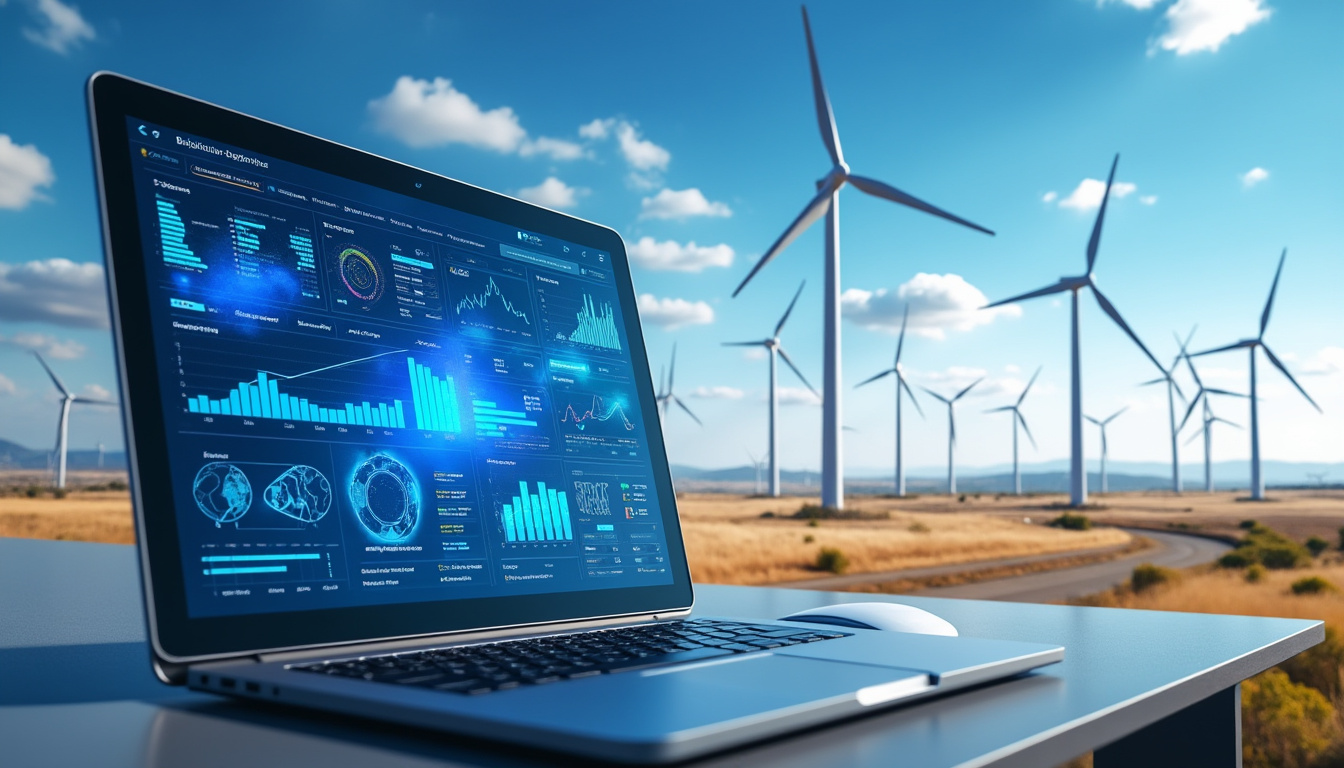As the world increasingly moves toward sustainable energy solutions, the wind power sector is facing a major challenge: aging wind turbines. Indeed, the useful lifespan of turbines, which can reach up to 20 years, often requires critical decisions regarding their continued operation or replacement. To help wind farm managers address this issue, a digital innovation dubbed “EolienTech” has emerged. This article explores how this tool, through an advanced digital approach, contributes to decision-making regarding the sustainability of wind turbines. Challenges of Aging Wind Turbines and Issues for Operators Wind turbines, like any technology, have a limited lifespan. Many of the turbines commissioned in the 2000s are nearing the end of their operational life. Decisions regarding their future are not straightforward, as they depend on multiple factors, including the economic situation, environmental impact, and the technical performance of the turbines. Studies show that many wind turbines are decommissioned when they could still be operating efficiently. Consequently, decision-makers face a dilemma: should they invest in upgrading the equipment or opt for dismantling and replacing it with newer technologies? Aspects to consider include:
Structural health of the turbines:
Consider material fatigue and the risk of failure.
Effectiveness:
- Evaluate the cost of maintenance against potential savings. New technologies:
- Analyze whether modern solutions could more than offset the necessary investments. Environmental standards:
- Determine whether maintaining the wind turbines still meets sustainability criteria. With these challenges in mind, a digital tool like DeciVents is crucial. It allows wind farm operators to capture real-time data and model turbine behavior over time.
- Innovative features of the digital tool DeciVents is based on a digital twin concept, a virtual replica that helps simulate wind turbine performance. This model relies on various parameters such as:
Integrated sensors: These collect data on wind speed, vibrations, and temperature. Predictive analytics:
Using advanced algorithms, the tool anticipates maintenance needs and failure risks.
Real-time visualization: Operators can continuously monitor the performance of each turbine.
- By offering these features, DeciVents simplifies the decision-making process. Wind farm managers can thus accurately assess their options, whether to renovate or replace turbines. Application Cases and Concrete Results
- This tool is currently being tested at an offshore site in the North Sea, in collaboration with companies such as RWE Renewables. Initial feedback indicates that DeciVents
- has already helped identify turbines in good condition that could be repurposed, rather than facing premature decommissioning. For example, at one wind farm, the tool detected that turbines, considered obsolete, could still operate efficiently for several years. This not only represents significant savings for the manager, but also ensures continued renewable energy production, thus helping to achieve Sustainable Energy objectives. Turbine Type
Maintenance Cost Estimated Operating Period Status
Turbine A
€15,000 3 years Requires Maintenance
Turbine B€20,0005 years
| Requires Replacement | Turbine C | €8,000 | 2 years |
|---|---|---|---|
| Requires Maintenance | Thus, | DeciVents | is not limited to a technical assessment, but also contributes to the sustainable and responsible development of wind energy. |
| Future Outlook: The Importance of Digital Transformation | The transition to renewable energy is not only taking place at the production and installation levels, but also in the management and maintenance of these infrastructures. The wind sector, like many others, must embrace this digital transition to remain competitive. The | OptiWind | tool, for example, illustrates this advancement by leveraging complex data to improve decision-making. |
| This paradigm shift highlights several advantages: | Cost Optimization: | Thanks to data analytics, managers can anticipate expenses and avoid unnecessary investments. | Reduced Environmental Impact: |
By extending the lifespan of turbines, waste production related to their replacement is avoided. Improved Productivity: Better maintenance planning optimizes turbine uptime. Those who integrate these digital tools are not only modernizing their organization, but also adopting a proactive mindset. Companies like SmartEolien and WindWise are positioning themselves as leaders in innovation, contributing to sustainable and environmentally friendly energy solutions.
Concrete examples of implementation
Many players in the sector are already adopting these new tools. Take the example of TerraÉolienne, which integrated digital solutions into the management of its 150 turbines. Thanks to tools like SageEnergie, it was able to: Reduce its maintenance costs by 25% in less than a year. Increase its operational efficiency, resulting in a 15% increase in its energy production.
Have a clear vision of the long-term performance of your installations, thus allowing informed decisions.
- With such results, it seems undeniable that digital technology will bring strong added value to the future of wind power. Towards informed and sustainable decision-making
- With the emergence of tools like EcoDecision
- , businesses can navigate a complex environment with more confidence. Every decision is now supported by reliable data and a deep understanding of each turbine’s performance. Today, the idea of re-evaluating the viability of older wind turbines using digital tools is not just limited to profitability. It’s a move toward a more sustainable energy future where every kilowatt of renewable energy counts. The commitment of players in the sector to improve their processes is a strong sign that digital innovation can take a prominent place in wind energy.
Conclusion on the digital tool and the sustainability of wind turbines The choices we make today about aging and upgrading our wind turbines will impact not only the economics of operators, but also the environmental impact of the energy we produce. This is why the importance of digital tools, like those mentioned here, cannot be underestimated. While WindTech and its equivalents continue to evolve, they offer promising prospects for sustainable energy management that not only meets market demands, but also distinguishes companies on the global stage.




